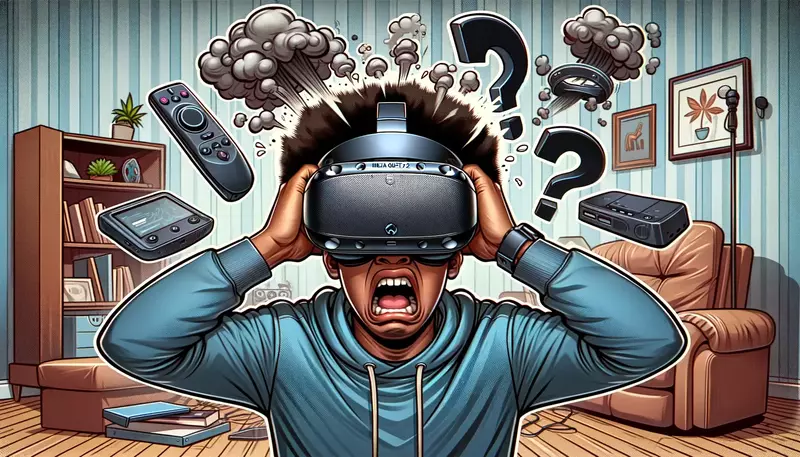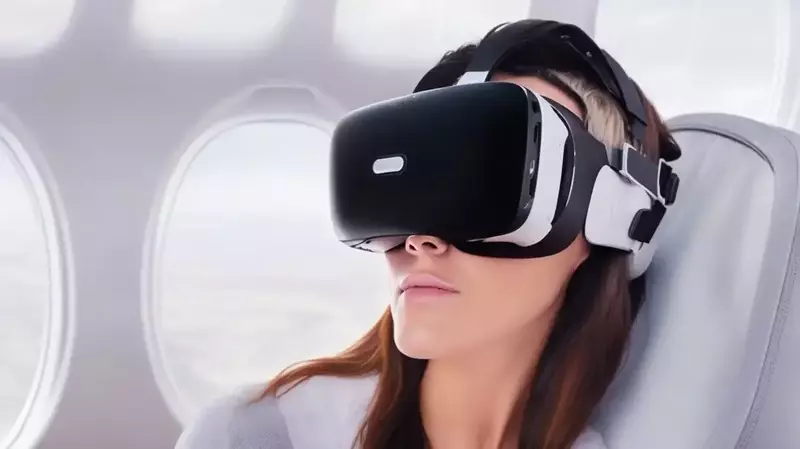This site contains affiliate links to products, and we may receive a commission for purchases made through these links.
While human imagination has allowed us to imagine what a true virtual reality experience might be like, the technology required to achieve full-dive VR still has a long way to go. But will true virtual reality ever exist?
Yes, I believe that True VR will exist. This might or might not happen in the next decade, but it is possible. Although it is a future technological potential, it seems long overdue at this time.
Read on as I dive deeper into how close we are to True Virtual Reality and where it is currently, limitations facing the VR, among other important issues on the topic.

What Is True VR?
True VR is the same as full-dive VR. This term, Full Dive was popularized by the light and anime series called Sword Art Online. This VR experience that was completely immersive.
VR presently only has 360-degree graphics, motion tracking and 3D sound design as its capabilities. Full Dive VR would employ your complete body to convey information to and from the brain.
A true ‘Full Dive’ VR experience necessitates something entirely different: you must enter a world as real as your own, be able to feel the objects around you, and be fully immersed in the environment instead of being a 360-degree viewer.
Fictional programs like One Sword Art Online or Ready Player spring to mind when thinking of a Full Dive VR experience. These presentations demonstrate what a ‘Full Dive’ VR experience looks like.
This experience is genuinely entering another world, complete with the capacity to fully feel and interact with its surroundings. They are far from the current level of VR in terms of VR headgear.
READ MORE! Will Full-Body VR Like “Sword Art Online” Ever Be Possible?
How Close is the VR Technology to Full Dive VR?
VR systems are getting more immersive at the moment. Users may convert physical movement into virtual data using various pieces of technology.
Handheld motion sensors, such as those included in the HTC Vive and PlayStation VR headsets, enable players to interact with virtual objects and creatures on a basic level.
The Virtuix Omni and the Kat Walk Mini are 360-degree treadmills that are a step forward. Users may walk around in the real world on these treadmills to move around in these 3D worlds.
On the other hand, Haptic technology translates virtual data into bodily sensations.

HaptX Inc., for example, has created haptic gloves that employ several small actuators to send touch, pressure, and temperature sensations to the user depending on interactions in virtual space.
In other words, Virtual Reality allows users to literally touch and feel objects.
The Teslasuit extends this notion by providing full-body haptic input, simulating the same physical feelings over the user’s complete body.
While haptic technology is still in its infancy, recent advancements have led to a far more immersive future for Virtual Reality.
Brain-Computer Interfaces
However, a system’s technology would have to go well beyond actual haptic input to provide a Full Dive experience, as shown in games like Sword Art Online. Full Dive is more about full-mind immersion than it is about full-body immersion.
As a result, such a system would include a brain-computer interface (BCI), which would enable users to control system operations only via thinking. This technology already exists in some form but for very different purposes.
People who are paralyzed often utilize BCIs as a way of communication. To provide information to the computer, sensors are used to monitor brain waves and facial nerve impulses.
Trials with this technology have resulted in a paraplegic man being able to walk across a room using just brain impulses.
Full Dive technology isn’t as far-fetched as it may seem when it comes to gaming. Awakening, a VR game developed by Neurable, was released in 2017.
The user could literally control portions of the game using just their thoughts, which was the big attraction of this experience.
By concentrating on certain items, users might toss stuff at opponents. Awakening uses a customized HTC Vive with several sensors that can detect brainwaves on the scalp’s surface.
Neurable is presently collaborating with VR partners to commercialize this technology.
They’re also creating a Unity development kit that will let developers experiment with the technology.
READ MORE! Can Virtual Reality Ever Become Too Real? (Explained!)
What Are the Limitations to Full-Dive VR Now?
1. The Strain on Current Computers
While today’s computers are powerful in their own right, they lack the computing power necessary to create a truly immersive digital environment.
From temperature to odors to the texture of the items we touch, our present world has a massive number of sensations that we go through every time of the day.
To construct a world that is so comparable to ours in terms of sensory, visual, and interactive information, a computer would have to handle massive volumes of data fast and smoothly, or the immersion would be shattered.
As of right now, no computer in the world is capable of handling the burden of all that data – but if we can develop a computer with sufficient processing power, we could be closer to a truly immersive VR world one day.
2. The Biological Abilities Required
When it comes to a Full Dive VR experience, it’s crucial to remember that not just technology science is necessary, But VR is also entwined with a degree of biology on a basic level.
We must be able to touch surfaces, differentiate smells, taste the food we sample and feel the dirt crunch under our boots if we are to enter a world as real as our own.
To put it another way, a huge part of what would make Full Dive VR conceivable is its sensory side, which would need a significant amount of sensory nerve system engagement.
Currently, the sensory nervous system – and, to be honest, the whole neurological system – is not often interfered with.
The sensory nerve system, which connects our brain to the rest of our body, enables us to truly experience the world we live in, from temperatures to smells to pain (hence the term sensory).
As a result, astronomical achievements in biology, such as the connection of our vast and immensely sophisticated nervous system to a technology gadget, would be required to genuinely ‘experience’ a VR world as real as our own.
Not to mention that if anything goes wrong with our nervous system’s tinkering, we may lose our capacity to experience certain things – or possibly get certain extremely unpleasant neurological conditions.
The dangers are just not worth it, given our present lack of biological understanding.
What Are the Limitations of a Full-Dive VR In the Future?
We shouldn’t anticipate full-dive VR to be cheap when it’s commercially accessible, even if it becomes a reality in the future. Full-body VR would most likely be as expensive as companies could sell it for at first.
Even if we speak about absolute immersion when it comes to full Dive, it’s vital to remember that we wouldn’t be able to avoid the financial interests of corporations offering these experiences even if we were completely removed from the actual world.
It’s crucial to remember that the whole full-fledged VR environment would be software-based. A badly designed VR world, or even a well-planned but hurried VR world, would undoubtedly be full of amusing and maybe experience-breaking errors.
Finally, it’s worth noting that even spending too much time in regular virtual Reality has been shown to have negative impacts on a person’s mental abilities.
True full-dive VR would very certainly come with health risks, particularly if it were in the nature of Sword Art Online.
What Are Other Technologies that would go a long way towards achieving The Full Dive VR?
The most prominent of them is undoubtedly electronic skin, sometimes known as e-skin. E-skin refers to smart wearable and sensors that are so flexible and light that they may be attached to clothing or even incorporated into it without causing the user to perceive a change.
Xenoma currently produces an e-skin product line aimed primarily at medical applications and monitoring requirements.
These might be readily adapted and fitted for full-dive VR demands, with the software keeping track of all of the user’s body data and physical activity and maybe even adjusting the VR situation appropriately.
To enable a user in full-dive VR to move organically and entirely, it would be necessary to understand motor cortex signals.
It would be critical to override in a semi-conscious state of full Dive to ensure that these motor cortex impulses do not convert into real-world movements that may mistakenly harm the VR user or anyone else nearby.
Cochlear implants, a sort of device that utilizes electrical impulses to allow the deaf to hear the sound, is another neuro-prosthetic technology that comes to mind. It does this by stimulating the cochlear nerve.
It’s possible that these innovations will be re-engineered into virtual reality gadgets. To say the least, that’s a stretch. But it’s a concept. It’s theoretically possible, too.
Final Thoughts
Given these considerations, it’s clear that we’re still a long way from a Full Dive VR experience. The necessary technical and biological achievements are well beyond our present capabilities, and the ramifications of things going wrong are just too great for us to contemplate.
That doesn’t imply VR will always be out of reach; with technology and science progressing at a rapid pace, the day may come when we finally crack the code to a fully immersive, Full Dive VR world.

Espen
Espen is the Director of PursuitMeta and has written extensively about Virtual Reality and VR Headsets for years. He is a consumer product expert and has personally tested VR Headsets for the last decade.




Leave a Reply